What are the Principles of a Good PR Campaign?
Learn about six principles to every good PR campaign and the tips and tricks within each step. From objectives all the way to evaluation.

Learn about six principles to every good PR campaign and the tips and tricks within each step. From objectives all the way to evaluation.

When you ask the question “what constitutes a successful PR campaign” your answer will depend entirely on who you ask. That’s the thing about public relations, outcomes are all about whose behind the wheel.
For a politician, successful PR may look like recovery from a rumor-filled scandal. For manufacturers, it’s common to deal with blowback from product or distribution errors. But the common PR threads across industries are the ideas of reputation and trust.
In an effort to deconstruct the elusive concept of “good PR” we’ll cover six principles to a successful PR campaign. So get out your pencils, we’re getting back to the real ABC’s of PR!
A public relations campaign is loosely defined as a series of planned activities and media relations orchestrated to help you or the organization you represent reach a specific goal.
While each campaign is it’s own unique snowflake, all the good campaigns have these key elements:
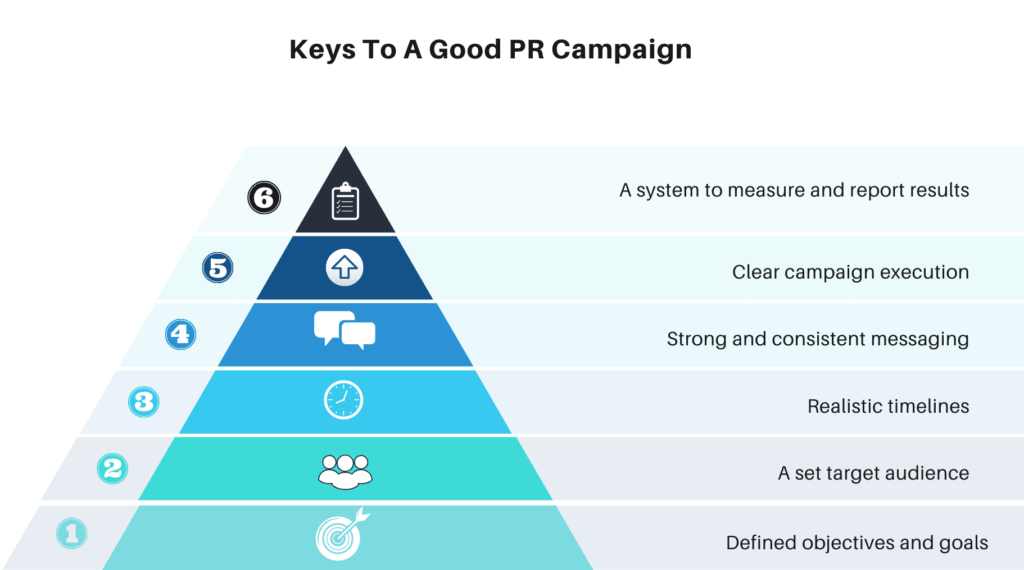
Before you begin any PR campaign you’ll want to clearly lay out exactly what you want to accomplish. A good place to start is your organization’s mission. Good goals and objectives should aim to support your core cause. To build around your mission is to ensure you stay on brand and on track throughout the campaign.
When you set campaign goals, think of it like a vision board. What long-term dreams would you like your organization to achieve?
On the other hand, objectives will be your more concrete grounding statements. Think of them like the building blocks that will help get you closer to your goal. It’s not uncommon to have a campaign with one goal and 5-10 different objectives.
Examples of good goals or objectives for a PR campaign might be:
Before you finalize goals and objectives, make sure they pass the SMART test. Ask yourself, are they specific, measurable, attainable, relevant, and time-based.
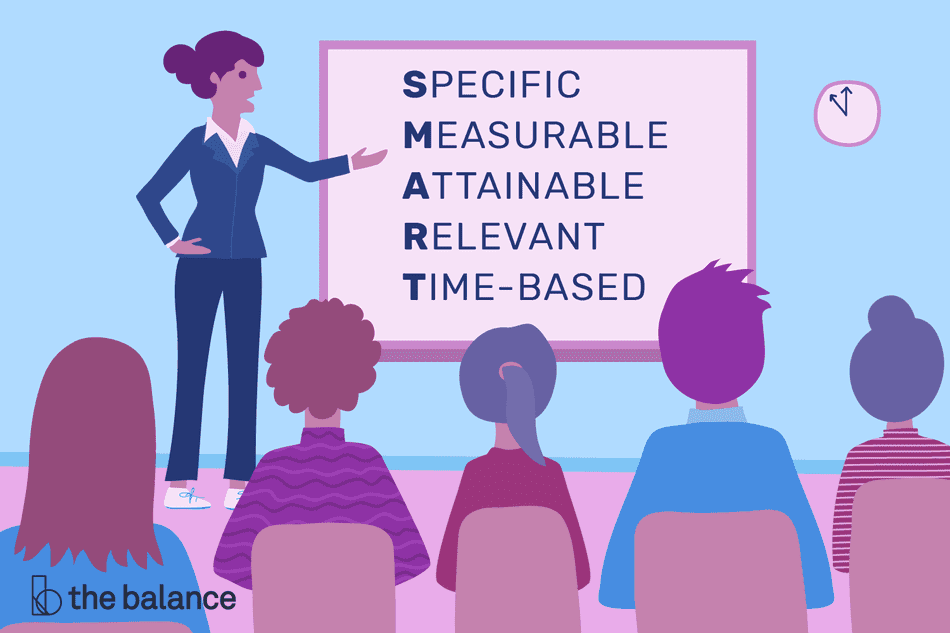
Once you have an idea of what you want to accomplish, it’s important to find out the key players that will help you reach those goals. Do your research to find out about the demographics and motivational factors of your ideal customer, listener, donor, viewer, etc.
Even if your goal is to become the world’s best SMS marketing platform, you still need to determine the kinds of people who will help you get there.
Your audience could be as broad as small business owners in the e-commerce industry, or as specific as females ages 18-25 with a household income of over $40,000, college education residing in mid-sized U.S. cities.
You set the scope, what’s important is that you have a clear picture in your mind for your messaging.
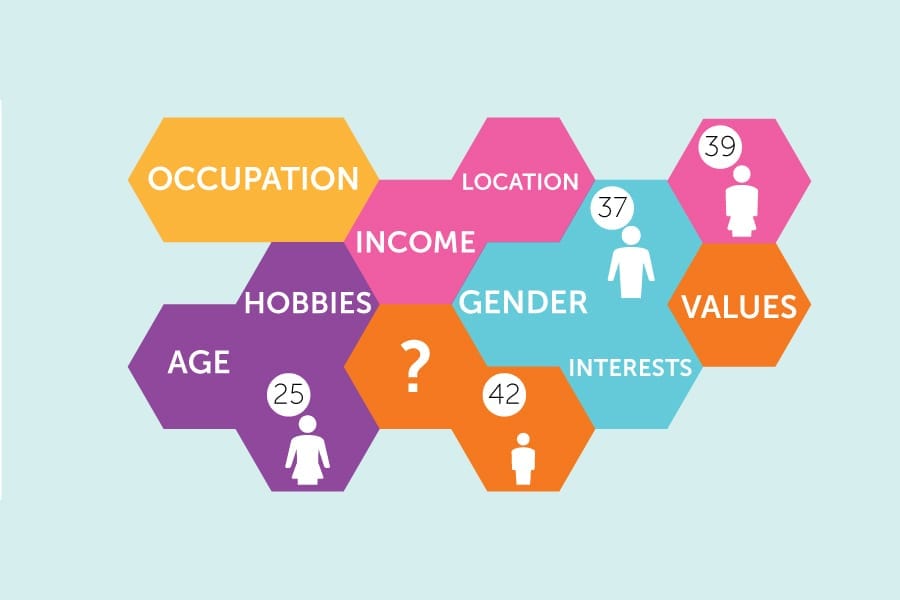
Becoming the “world’s best fast food restaurant” doesn’t happen in a year. But being known for having the crispiest french fries in the fast-food industry could.
Back in step one, when you set your goals and objectives, you laid the foundation for your timeline. It’s the truly great PR campaigns that take that a step further and bring their timeline to life.
In order to be a true PR campaign, you must have a defined beginning and end. The space between the two is up to you, but remember it’s all relative to the size of your goal.
The average length of most PR campaigns is anywhere from six weeks to three months. Some organizations prefer to set campaigns on a quarterly schedule. Again, the formula is up to you. But in order to understand your progress, it’s important to establish a timeline.
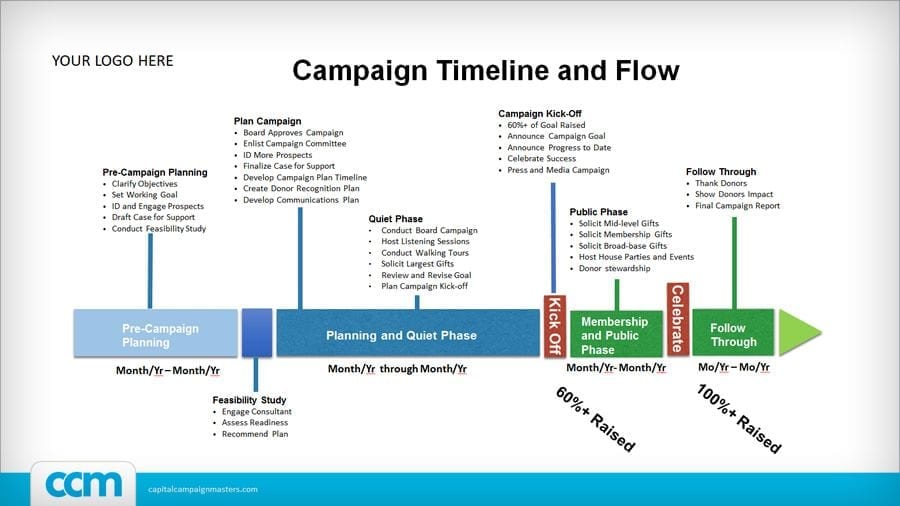
Here is where the real “work” on your campaign begins. With your arsenal of research in hand, you want to begin to develop a message that speaks to your audience directly. What motivates their behavior in a way that brings you closer to reaching your goal?
Is there something your competitors aren’t saying that you can fill with your own conversation? Do you need to employ researchers to help you start this conversation? Will you educate or sell?
Think of the problems your product or service solves and build out from there.
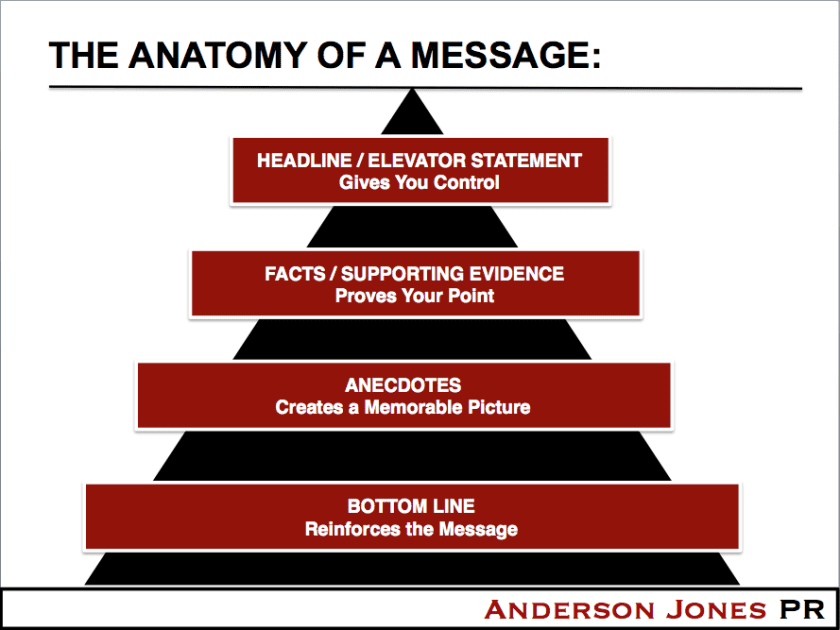
Welcome to your action phase. This space looks different for every campaign, but it commonly comes in the form of:
As you work out your campaign messages, you’ll begin to form an idea of what your campaign will be. For example, take a look at some of the top PR campaigns from the last few decades in the graphic below. When you see what the goal was and who the business targeted, you can see that their actual campaign comes rather organically!
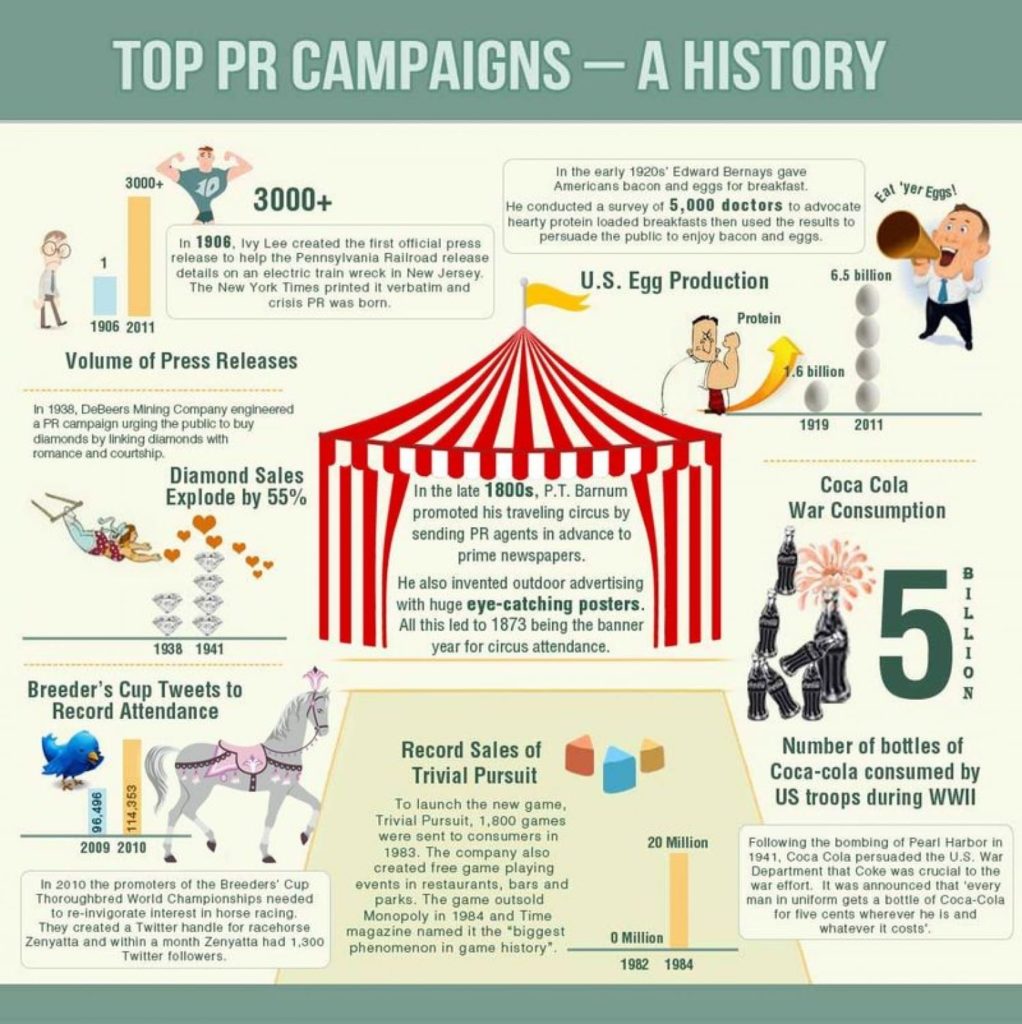
After you (hopefully) pat yourself on the back for your excellent event, media coverage, or product launch, you reach the evaluation portion of your campaign. Now is the time to reflect on what worked, what didn’t and, of course, if you hit your goal.
If you followed the SMART test, the goals you set should have been easily measurable, which makes this step a lot easier. Take the sum of your activities and efforts and determine if indeed you achieved what you set out for.
If you did, how can you replicate and maintain this momentum down the line? If you didn’t, where did you go wrong? At what point in the campaign did you notice performance decline? No matter the outcome it’s a learning opportunity, which makes this step so valuable.
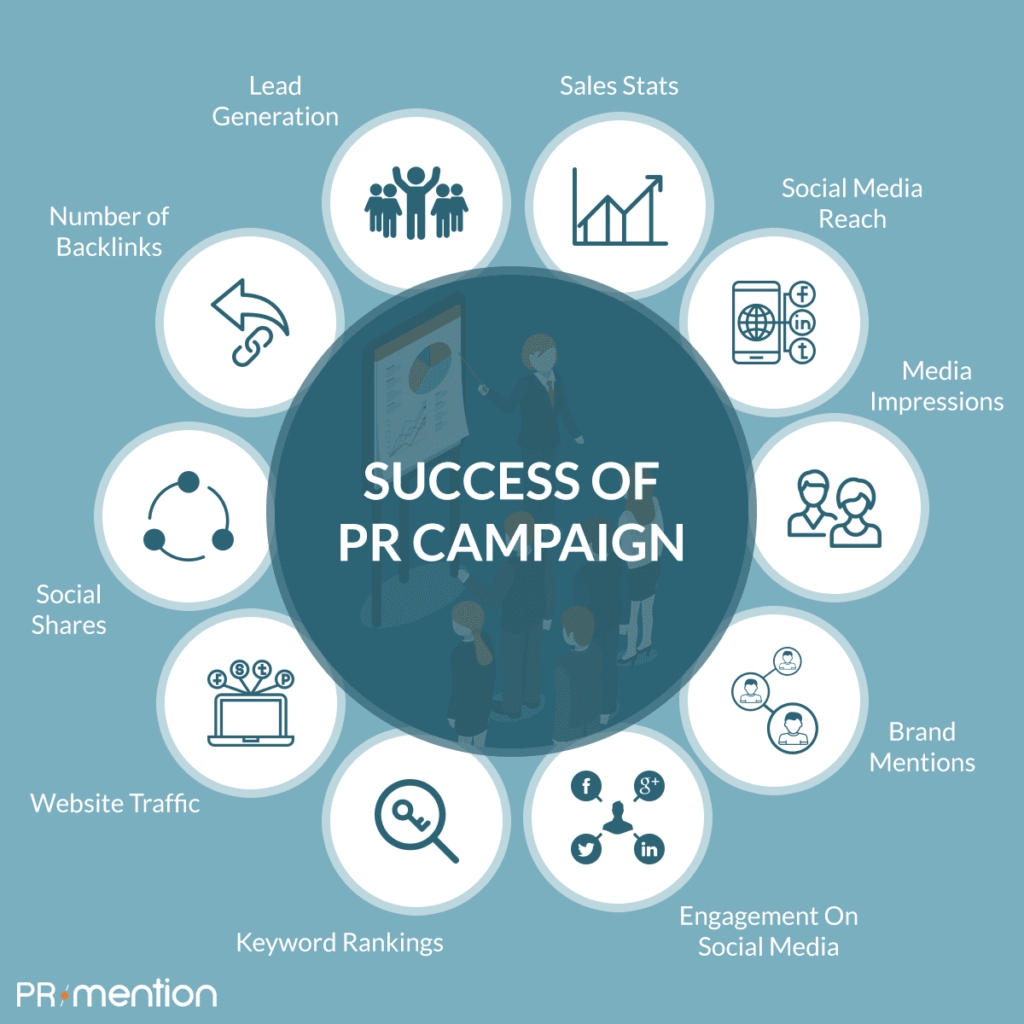
If we had to put the “secret” to a good PR campaign into three words, it would be “don’t cut corners.”
Taking the time to thoughtfully execute the six steps above will set your campaign apart from the rest. There’s a reason our first graphic was in the shape of a pyramid. If you take the time to start with a strong foundation your campaigns will continue to rise above the noise generated by the marketing mix.
Meghan Tocci is a content strategist at SimpleTexting. When she’s not writing about SaaS, she’s trying to teach her puppy Lou how to code. So far, not so good.
More Posts from Meghan TocciMarketing blogs are full of advice on how to measure promotional campaigns’ performance. Here's what they don't tell you.
ReadWhen should you ask for a referral, and how can you persuade customers to refer your business to their network? It’s all in here.
ReadStart a text marketing campaign or have a 1-on-1 conversation today. It's risk free. Sign up for a free 14-day trial today to see SimpleTexting in action.
No credit card required